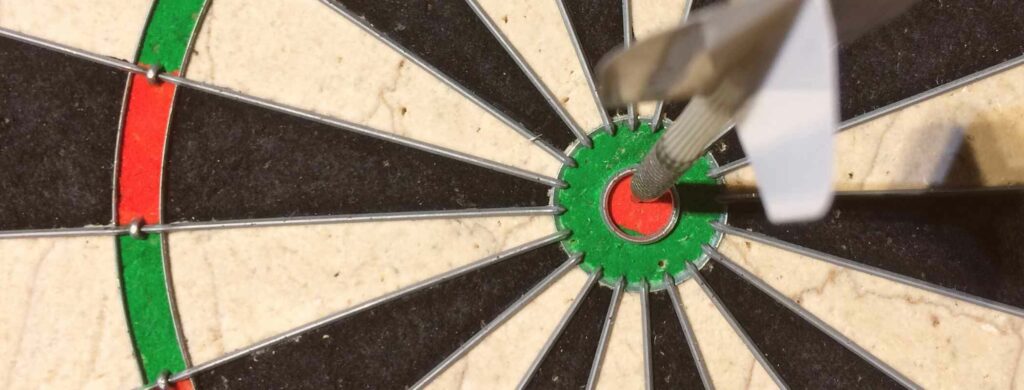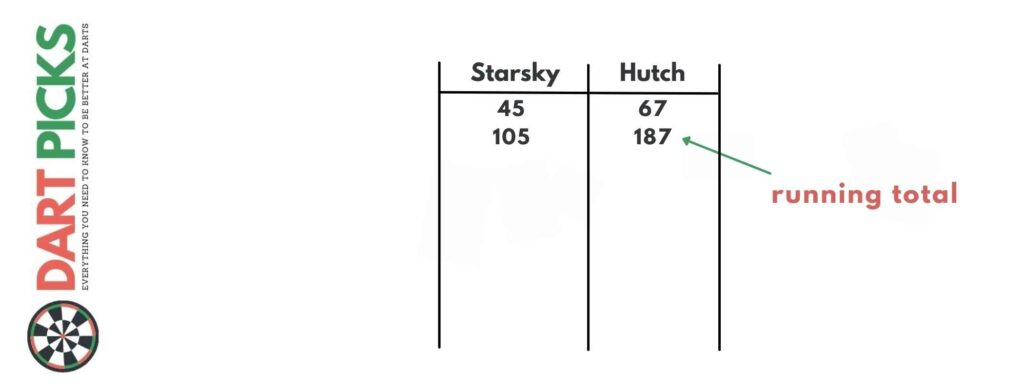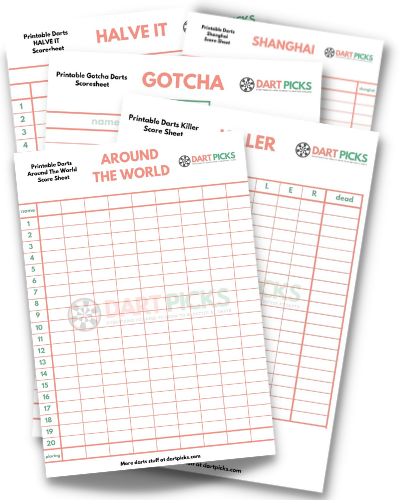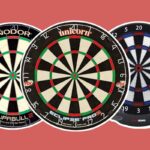High score darts is one of the simplest dart games to learn – here is how to play in a nutshell:
- Decide on a high score number to win – eg 1000
- Decide who throws first by each throwing at the bull – nearest goes first
- Take turns to each throw 3 darts and count up score to add to your running total
- First person to reach 1000 is the winner
Table of Contents
How to Play High Score Darts – The Details
How Many Players?
High score darts is best played in teams or 1v1. You can also choose to play solo and keep track of how many darts it takes you to get to your high score. Next round, challenge yourself to get a higher score.
What High Score to Play To?
When deciding what score you want to play to you should consider these factors:
- How long do you want the game to be? For a longer game choose a higher target score, for a shorter game choose a lower score.
- How many players are in a team. The more players in a team, the quicker they will reach the high score. You may need to raise the score if games finish too quickly.
If you are playing 1v1 try playing to 1000. You can adjust as necessary for another game.
Get our free printable scoresheet for high score darts.
Decide Who Goes First

The most common way to decide who plays first is to have each player (or a nominated person from each team) to throw for the bullseye. The closest dart to the bull gets to go first.
Alternatively, each player can throw 3 darts and the highest score goes first. We like to play this way as it’s more in keeping with this particular game.
How to Check Out of High Score Darts
Checking out is easy in high score darts as all you need to do is get more than the target score. For example, if the target score is 1000 and a player goes to take their turn with 900 point and they mange to hit 120, it still counts and they take the win.
There is no bust in high score darts.
How to Score In High Score Darts

Scoring is simple as the segments on the board have their usual points.
For example:
- Singles are worth one of that number
- Doubles are 2x
- Triples are 3x
- Outer bull is 25
- Bullseye is 50
Players can either keep a running total in their head or you can simply mark their running total on a scoreboard as you play. From the example above, Starsky threw 45 with his first 3 darts and 60 with his second 3 darts, making a running total of 105.
Hutch threw 67 with his first 3 darts and got 120 with his second 3 darts adding up to a running total of 187.
Game Modifications
As with all dart games there are some easy ways to modify the games that can be useful, particularly if you want to introduce a handicap for more experienced players.
These are ways you can modify high score darts:
- Choose a higher target score. This makes for longer games or is perfect for playing in teams and adding everyone’s score together.
- Choose a lower target score. Ideal for a quick game or for new players.
- Different target scores. This is a good way to introduce a handicap if the player level is very different. For eg. If Julie is an accomplished player she can have a target score of 1000 when playing against Fiona who is not as experienced, should have a lower target score of 800.
- Only triples or doubles count. If playing with skilled darts players, you could up the game difficulty by only allowing points to be scored if the darts hit in the triple or double segments. This can be a fun challenge for consistent players.
- Double to check out. To add difficulty for all players if they go over the target score when trying to finish, they bust their turn and must finish on a double.
Variation on High Score Darts
An alternative way to play is to challenge an opponent to score high in each leg.
First decide how many legs to play – make it an odd number so there is a clear winner. Each ‘leg’ is a player throwing 3 darts. The player with the most points from their 3 darts wins that leg and gets a point. At the end of the pre-determined legs, the player with the most points wins.
Both variations of high score darts are excellent training games for playing 301 or 501 darts.
High score darts is also known as Count up Darts and you can check that out here.
Tips For Playing Good High Score Darts
Focus on triple 20 to try and achieve 60 points per dart. If you miss you are likely to hit a single 20 which is a good, solid score and can allow you to progress nicely.
If you have a preference for hitting triple 19s then by all means use it. With only 3 points difference from the triple 20, a triple 19 player can easily play just as well. This allows you to play to your strengths and hit your favorite target.
Don’t be intimidated if your opponent is scoring well. You are just one dart away from a triple 20 as they are from a 1. Darts can swing and change in the blink of an eye so don’t let their score intimidate you.
Final Thoughts
Sometimes in life the simplest things are the most fun and this is the case with this super simple game of high score darts. The adding AND subtracting involved in ’01 countdown’ games can be intimidating for new players and in high score darts, simple adding can easily be achieved by most people. Use a scoreboard if doing the numbers in your head is tricky.
If you do have trouble, there is no shame in reaching for a calculator!
Sue has been playing darts since her 20’s when she played in weekly tournaments and she enjoys writing about darts. She’s also a great teacher, and she enjoys helping others learn how to play the game well. When Sue isn’t throwing darts, she enjoys spending time with her family and friends.
The easy way to keep track of your score is with our printable darts scoresheets. Easy to download and keep on your phone or computer or print straight off from our website. Pop your email address into the box and we'll send them straight to you.







